
Arquivo para a ‘Museology’ Categoria
Period of Judges or Birth of Republics
By biblical narrative and also by archaeological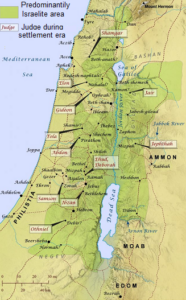 and historical studies, the period of the end of the exodus and reunification of Israel became known as the period of the judges, however it is possible both a biblical and historical reading as the birth of a proto-republic.
and historical studies, the period of the end of the exodus and reunification of Israel became known as the period of the judges, however it is possible both a biblical and historical reading as the birth of a proto-republic.
In the final period of Moses, he manages to see Canaan in the distance, he sets up a tent a little away from Moses where the biblical narrative says: “Moses asked for the tent and pitched it far away, outside the camp, and named it Tent of Meeting. So everyone who wanted to inquire of the Lord went out to the Tent of Meeting, which was outside the camp,” and when Moses went there, the people followed him with their eyes.
According to authors (Horowitz, 2005) and (Everdell, 2000) the period from 1250 BC. until 1030 B.C. It was characterized by the political, religious and military leadership of a leader who, by divine instruction, unified and directed the tribes of Israel and could be considered an Israelite Confederation (the ancient tribes of Israel after the exodus and return to the region of Canaan), were a type of republic ruled by judges, after the death of Moses and the leadership of Joshua.
Moses had previously sent 12 spies to the territory of Canaan, among them Joshua and Kalebe, on the way back they established a military strategy where first the famous siege of Jericho took place and then they conquered the mountains Betel and Gibeon.
After the conquest of the territory, the period of the twelve judges begins, who will govern the people and lead them in battles for the maintenance of the territory, and will settle in a territory that goes from Mount Herman in the north to Mount Haloque and Negeb in the south.
In this period there were still several fights, some of the judges are known in the literature as the last Judges: Samson, Eli and Samuel, , however the account of Deborah as a judge of Israel is unique, considering the patriarchal society that lived (Judges 4-5) , the last judge was Samuel, the great prophet who chose, at the request of the people, the first two kings: Saul and David.
This historical period was marked by the activity of the Old Testament prophets: Jeremiah, Ezekiel and Daniel, who tried to correct the course and destiny of their people. At the end of this period in history, the rise of the Assyrian Empire is also recorded, but it will reach the limits of Israel going as far as Egypt, under the leadership of Ashurbanipal in 690 BC. to 627 BC, in 609 BC. the first deportation of the Hebrew to Babylon takes place, and in 598 B.C. young king Jehoiachin, king of Judah, voluntarily surrenders.
Horowitz, Maryanne Cline (2005). «Republic». New Dictionary of the History of Ideas. 5. Detroit: Charles Scribner’s Sons.
Everdell, William R (2000). The End of Kings. A History of Republics and Republicans (em inglês). Chicago: University of Chicago Press.
The Kingdoms of Israel and Judah and History
As we have pointed out, it is a period of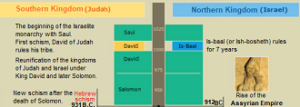 historical disintegration, and the need to group the Hebrews and also bring the divine message is explained by some scholars as the creation of this historical figure Joshua, who would be a name modified by Moses to Hosea (in Hebrew Yehoshua), as narrated, among others, by the biblical historian Robert Coote (2010).
historical disintegration, and the need to group the Hebrews and also bring the divine message is explained by some scholars as the creation of this historical figure Joshua, who would be a name modified by Moses to Hosea (in Hebrew Yehoshua), as narrated, among others, by the biblical historian Robert Coote (2010).
Joshua was the son of Nun, from the tribe of Ephraim, his book is the first roll of the “Books of the Prophets” according to the Judeo-Christian tradition, and he will be the leader of the battle of the fortress city of Jericho, which became eternalized as the famous “Siege of Jericho”.
However, the arrival in Canaan, after sending “spies” to recognize the land of Canaan, the promised land will be governed by judges in an attempt to maintain the religious and political order of the people that was in the process of fragmentation, among the main judges were Jephthah, Gideon, Samson and Samuel.
When Samuel got old, the sons “became greedy, accepted bribes and perverted justice”(Samuel, 8:3), something similar to the present day, the authorities went to Samuel and asked for kings like other peoples.
Samuel in a meeting with Saul who went out to look for his donkeys of the father Kish, who was a man of possessions from the tribe of Benjamin, there Samuel has a divine vision that that was the man chosen by God.
Saul should receive the prophet’s orders, but he reveals himself as having an immature and pagan faith, he wanted to offer sacrifices to God to obtain quick help for his interests, something similar to many Christians today, and despite many victories over the enemies of Israel, is deposed, and in his place is appointed David, who had fought the Philistine giant Goliath.
The division of the kingdom of Israel in the period that David ruled for a long time was only in the biblical narrative, but in 2015 the name Is-bosheth (or Is-baal) was discovered in an inscription by Israeli archaeologists (JNS.org, 2015).
For many centuries, the name Is-baal was found exclusively in the Bible. In 2015, however, Israeli archaeologists revealed to have discovered an inscription with this name on an ancient artifact for the first time “Eshbaal Ben Beda”.
Out of envy of David, Saul will try to kill him twice and David, when he has the opportunity, does not do it and forgives him, and Saul ends up committing suicide.
From David’s relationship with Bathsheba, wife of Uris that David sends to the front of the battle to die, Solomon will be born, who will govern his unified people with wisdom, but later approximately in the year 931 BC. a new Hebrew schism will occur.
This period of history closely approximates the period of the rise of the Assyrian Empire in 912 BC, in 612 BC. begins the decline of this empire and rise of the Persian Empire (550 BC).
JNS.org. Jewish and Israel news (june 16 of 2015). «King David-era inscription pieced together from broken jug»,
Exodus: historical and divine realities
The history of Ancient Egypt is generally divided into the Old Kingdom, from the great pyramids of the pharaohs Cheops, Chephren and Mycerinus, built near Memphis, the capital of Egypt at the time, then the Middle Kingdom (2100 BC to 1580 BC), the biblical character is born at the end of this period, and the New Kingdom (1580 BC to 715 BC), when they begin to face invasions until they are defeated by the Assyrians (6 70 BC).
divided into the Old Kingdom, from the great pyramids of the pharaohs Cheops, Chephren and Mycerinus, built near Memphis, the capital of Egypt at the time, then the Middle Kingdom (2100 BC to 1580 BC), the biblical character is born at the end of this period, and the New Kingdom (1580 BC to 715 BC), when they begin to face invasions until they are defeated by the Assyrians (6 70 BC).
In the biblical narrative one can divide the: first (1,1-15,21): coexistence in Egypt from Joseph to Moses; second (15.22-18.27): theophany and journey in the desert to Sinai; third (19-40): option for the divine proposal (Moses is called to lead the Exodus) and the covenant on Sinai.
It is interesting to observe the sequence that is repeated in the period of Abraham: leaving Ur in Mesopotamia, walking to Canaan, the alliance with Abraham (Gen 17:15-17) and the call to God in the offering of his son Isaac and the formation of the 12 tribes of Israel and the sale of Joseph to the Egyptians.
It is important to analyze the 10 plagues in Egypt in this biblical-historical context, a famous papyrus found in 1909 of an Egyptian called Ipuwer (or Ipuur which according to the scholar A. H. Gardiner was a typical name of the period 1850 BC -1450 BC), written in the form of a poem complains that women now have “furniture”, and girls have “mirrors” while the rich man lives in rags.
The papyrus is important for its connection with the biblical narrative, mentioning slaves fleeing Egypt and rivers of blood, but scholars speak of the Minoan eruption, which occurred during this period on the island of Santorini, near the island of Crete, which devastated a Minoan settlement.
The waves produced may have reached Egypt at the time, but the effect on the Nile delta is questioned by most fishermen, but the Ipuwer papyrus has a narrative close to the biblical one regarding the events in Egypt and, most importantly, narrates the beginning of the fall of the Empire through customs, a period that history calls the New Empire.
The 10 plagues of Egypt in the biblical narrative were: the river of blood, infestation of frogs, lice and flies, plague in cattle, ulcers in people, hailstones, infestation of locusts, darkness and the death of the firstborn of families.
As described in previous posts, the people of Israel guided by Moses will cross the desert, reach Canaan after four wars and stay there until a new exile in Babylon.
Egypt after the invasion of the Assyrians mentioned above, later they were dominated by the Persians in 525 BC. and by Alexander the Great in 322 BC, finally by the Romans in 30 BC.
Whether for purely historical reasons, social decay or divine intervention, empires fall from the oppression and tyranny they exercise, but there is a cycle of suffering.
The right question about evil
There is no doubt that there is cruelty, evil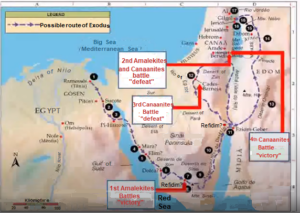 and indifference which is the great contemporary evil, but it is neither Manichaeism nor pure evil incarnate.
and indifference which is the great contemporary evil, but it is neither Manichaeism nor pure evil incarnate.
Always at all times agreements and wars were tried, often just for convenience or even war tactics, we have already posted about bad post-war agreements, such as Germany that came out humiliated from the first world war and we learned little from history.
We are making the route of the Jewish-Sumerian people until they get back to Canaan, where they left due to hunger to go to Egypt, before leaving Moses receives the divine message to address the Pharaoh, he goes with his brother Aaron, but what is the point knowing that the Pharaoh is merciless with the Israelite people? It’s just that the true divine message is always good seed for all peoples, that’s why the parable of the good seed, which should be the name of the parable of the tares and wheat.
Even going to talk to the pharaoh, the Israelites will be pursued, and then they will have to fight 4 battles in the flight through the desert, the battle of Rephidim where the marauding Amalekites win, the second again against Amalekites and Canaanites (so the location of Rephidim may be further north), the third a defeat against Canaanites and the 4th. the final victory.
See the reading (Mt 13,26,27): “When the wheat grew and the ears began to form, the weeds also appeared. The employees went looking for the owner and said to him, ‘ Lord, didn’t you sow good seed in your field? So where did the weeds come from?’ and the manager says not to uproot the weeds because it might uproot the wheat with it.
The divine seed is always good, but tares will always grow among the wheat and only from there can we correctly interpret the seed that falls on bad soil and among thorns and does not flower or bear fruit.
There is always hope and always a possibility for peace and harmony among nations and peoples.
The Burning Bush Episode
The story of the departure of the Israeli people from Egypt begins with an extraordinary event in which Moses leads Jethro’s flock, I am father-in-law and priest of Midian (history records him as a Druze) and near Mount Horeb he sees a burning bush that does not consumes it (Ex 3,3): “I am going to approach this extraordinary sight, to see why the bush does not consume”.
from Egypt begins with an extraordinary event in which Moses leads Jethro’s flock, I am father-in-law and priest of Midian (history records him as a Druze) and near Mount Horeb he sees a burning bush that does not consumes it (Ex 3,3): “I am going to approach this extraordinary sight, to see why the bush does not consume”.
There he receives the mission to remove his people from Egypt and the episode of the Escape from Egypt will begin, just as Abraham had withdrawn from an unlikely path from Ur of the Chaldeans, Moses will also make a route going through the region of Midian, in the biblical narrative this people it is also of Abrahamic origin since Abraham after Sarah’s death had Midian or Madian with his wife Keturah.
The historical record of the plagues of Egypt that preceded the flight can be found in the “Ipuwer papyrus” discovered in Egypt at the beginning of the last century, and taken to the Leiden museum in Holland, it was deciphered by A. H. Gardiner, and was found near the city of Avaris.
The Israelites at the beginning of the persecution are established in the warehouses of Rameses and Pitom, then they begin to migrate to Sucode, and from there they begin the flight to the Sinai desert, it will be in Horeb where Moses saw the burning bush that will receive the tablet of the law, the Ten commandments.
Jetro’s connection with the Midianites, he was a priest, is fundamental in the logistical support for the fleeing caravan, and this is probably the reason that they took a longer route, and we see from the map that it is likely that at the end of the persecution there will be a new one. miraculous episode that is the passage to be dried by the Sea.
The following story of the people will speak of many connections with the Moabites (Ruth was a Moabite and Lot would have given rise to the people through incest with his daughter) they lived in the desert so the road to Canaan will be even longer, the Egyptians still dominated the region, what was to be accomplished in days says the narrative that took 40 years.
In the history of that region, troglodytes lived, not in the folkloric sense that we know, but the fact that they lived in caves and houses dug in the mountains, as was also characteristic of the north in the well-known Cappadocia, region of so many mystics of antiquity.
Persecution and emigration always affected nations in wars.
Joseph of Egypt and Moises: the Noosphere
Joseph of Egypt before the Exodus of the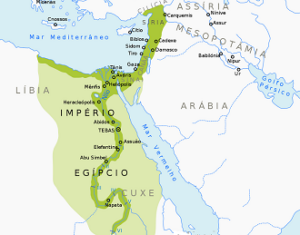 Israelites in Egypt, had two dreams the first that the brothers identified as “beams” who bowed to him, and the second that the Moon and eleven stelae (symbolizing the 11 tribes) bowed to him, and the brothers and even Israel do not believe in this, this cosmogony is present in the three great Abrahamic monotheistic religions.
Israelites in Egypt, had two dreams the first that the brothers identified as “beams” who bowed to him, and the second that the Moon and eleven stelae (symbolizing the 11 tribes) bowed to him, and the brothers and even Israel do not believe in this, this cosmogony is present in the three great Abrahamic monotheistic religions.
It will be Joseph in Egypt who will feed them in the time of the lean cows (the Pharaoh’s dream that Joseph unravels), there are no precise reports, however, the most likely is that this has taken place in the time of Pharaoh Sheshi I, and history records a period of famine and scarcity in the region.
But with the death of Joseph, the biblical narrative, now of the exodus says that the successor Pharaoh did not know Joseph and begins to fear, ordering that heavy work be established for the Hebrews until he orders to throw all the newborns in the Nile river, and then begins the saga of Moses.
Moses was born of the tribe of the Levites, who were priests and had no territory in Israel, he was the grandchild of Coate, son of Amram, with Jochebed his aunt and sister of Coate, due to the death of the newborns, he is raised in secret and after 3 months, when it is no longer possible to hide it, it is thrown into a basket prepared with tar and bitumen and thrown into the Nile, her older sister is on the lookout and sees that princess Henutmire, together with Yunet, when they hear a child crying the rescue, they know it’s a Hebrew child, but they decide to raise him.
It will be through Moses now, that the Hebrew people will return to Israel, in the biblical narrative it is when Moses was near Mount Horeb that he sees a burning bush (but it does not burn) and dresses in a veil because he cannot look in the face for her, who receives the mission to lead her people to Israel.
This period is called the Middle Kingdom, from 2100 BC. until 1580 BC, when Palestine and Nubia were conquered and where they found precious metals that stabilized the economy.
The Egyptians were polytheistic, and Moses marries Zipora (Exodus 2:21) who was a daughter of Jethro, a Druze priest, who claimed to believe in a single god, but for the Druze it is a type of universal mind, something close to the noosphere de Chardin, but reduced to “mind”.
This is followed in the biblical narrative by the plagues of Egypt and after many years, the Hebrews walk dry through the Red Sea.
The fear of change and not evolving
The great lesson of Joseph of Egypt is that 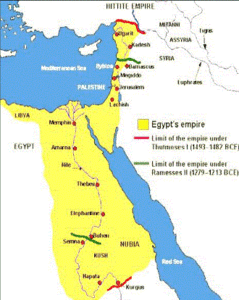 under an apparent “slavery” or difficulty is hidden a necessary change for peoples and nations to develop, in history the departure of the Hebrew people from the “promised land” is even desired by God according to the biblical text in Genesis (Gn 46,4): “I will go down with you to Egypt and I will bring you back from there when you return; and it is Joseph who will close your eyes”, he says to Jacob (Israel) and asks him to take all his relatives.
under an apparent “slavery” or difficulty is hidden a necessary change for peoples and nations to develop, in history the departure of the Hebrew people from the “promised land” is even desired by God according to the biblical text in Genesis (Gn 46,4): “I will go down with you to Egypt and I will bring you back from there when you return; and it is Joseph who will close your eyes”, he says to Jacob (Israel) and asks him to take all his relatives.
The Egyptian Civilization was formed from the mixture of different peoples, among them, the Hamites, the Semites and the Nubians, who emerged in the Paleolithic Period, and it is probable from recent archaeological research that the Jews went to make their settlements in the Hyksos region who were defeated by the Egyptians.
In the year 3200 B.C. Menes unified the kingdoms of lower and upper Egypt forming the Egyptian Empire and Menes being its first emperor and pharaoh, the Jews went there later in the year 1750 BC. and stayed until 1250 BC. as slaves because they were feared by the pharaohs.
Most likely it was during the reign of Pharaoh Ramses was the son of Pharaoh Sehti I and Queen Tuya. He was the third pharaoh of the Nineteenth Dynasty of Egypt. At the age of 10, Ramses was sure that he would assume the throne when he was recognized as the “eldest son of the king”, having fought at a young age alongside his father in the conquest of Lebanon (see the map between the blue and red lines).
The last pharaoh was Xerxes I, famous for the battle of Thermopylae, where the Greek general Leonidas would have fought with only 7000 men, and prepared an ambush in a pass between Thermopylae mountains, but the Greeks were betrayed and the strategy was discovered.
Also from this period, the repentance of the brothers of Jacob (Israel) who struggles “with God”, and of the brothers, especially Judah, who regrets having sold his brother Joseph as a slave, shows how in the story of an evil one can take a good if errors are recognized.
Even the bad seed can flourish even if it is planted in bad but fertilized soil.
The Semitic Origins of the West
Our culture and society is often referred to as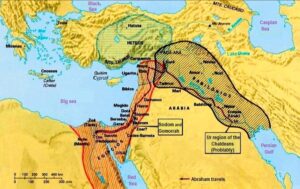 Judeo-Christian, but if we look deeper into history, Judeo-Christian culture descends from Semitic, and thus both Arabs and Jews descend from Semites, as does much of North Africa.
Judeo-Christian, but if we look deeper into history, Judeo-Christian culture descends from Semitic, and thus both Arabs and Jews descend from Semites, as does much of North Africa.
At the root of three great religions is Abraham: Jews, Arabs and Christians, here is his pilgrimage from Babylon of the Chaldeans, the Biblical narrative places him in Ur of the Chaldeans, is the neogenesis of these three great peoples, of which only a few eastern peoples where these religions already penetrated and also some originary peoples where there is still their initial religiosity.
Abraham goes through two great civilizing crises the Babylonian fall and after his pilgrimage to ancient Assyria arriving at the city of Aleppo, which under the rubble of the war and the earthquake still exists in Syria today, and then from to the Hebron valley, where he spent by a second civilizing crisis in the cities of Sodom and Gomorrah, where there were orgies and decadence.
He leaves there and goes towards Egypt, and his son Isaac will also remain a nomad, the fight between his sons Esau and Jacob is famous, Machado de Assis has a book with this name and we could say that the polarization of humanity is older than we think.
From Jacob will be established the lineage of the 12 tribes from his sons, and from the lineage of Judah will come David, while from the lineage of this one will come Joseph son of another Jacob, and of Joseph be born Jesus.
Understanding this Abrahamic descent, with all the struggles and contradictions that have taken place in history, is fundamental for us to understand both Christian, Islamic and Jewish culture, an inter-religious and multicultural dialogue is possible if we understand that the history of a single God, just as a distant historical past unites these peoples.
Religious fundamentalism prevents this dialogue, the evangelist Matthew who was an enemy tax collector of the Jews, refers to his own conversion like this (Mt 9,10): “While Jesus was at the table, in the house of Matthew, many collectors came of taxes and sinners and sat at the table with Jesus and his disciples” and Jesus will say “it is the sick who need doctors” and completes the teaching by saying “I want mercy and not sacrifices”.
How much division, hatred and violence in the name of God, this is not religion, it is just fanaticism.
The noosphere and oral culture
The period of oral culture predominated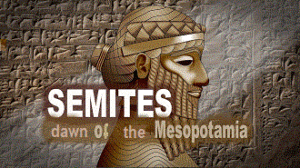 before 3000 BC, although there were scribes in Egypt, cuneiform writing in Mesopotamia and ancient Babylon, there was also writing in Ancient China and also in the civilizations originaries in the Americas: Mayans, Aztecs and Incas.
before 3000 BC, although there were scribes in Egypt, cuneiform writing in Mesopotamia and ancient Babylon, there was also writing in Ancient China and also in the civilizations originaries in the Americas: Mayans, Aztecs and Incas.
The form of dissemination of culture and, therefore, of the evolution of the noosphere was through prophets and oracles, whose main function was the transmission of oral culture and preceded literate and philosophical teaching, until we have a more notable turn in Greco-Jewish culture -Roman.
In biblical terms, according to Genesis reports, using genealogies presented in the bible, we can say that it is at least 6 thousand years old, but if we understand the narrative, Abel was a shepherd and Cain was a farmer, so this narrative begins at the moment when man becomes more sedentary and the civilizing process becomes clearer, the fact that Abel is a shepherd is symbolic for biblical language.
If this is a fact without historical proof and also Noah and the flood are still an eternal search for documentation, however their sons Shem and Ham can already be found in history, since the Semitic and Hamite peoples are registered in history, and Jafé who was to dwell in the tents of Shem.
The Semites were the dawn of the Mesopotamian cultures that peaked in Babylon (1792–1000 BC) and were later dominated by the Persians.
Prophets and oracles will be fundamental in ancient cultures, they should have a certain “divine” illumination so that history does not get corrupted and customs are changed.
According to Genesis 11, from the Flood to Abraham passed about 292 years, and from the birth of Abraham to the settlement of Jacob in Egypt passed about 290 years, ‘from Abram to the coming of Christ is about 2000 years, and then begins an era of written culture, and thus the gospels appear while in ancient Greece the Socratic and Platonic schools, since we know of Socrates through Plato and then the Aristotelian school, period that the schools and writings are fixed.
It is not about overcoming oral culture, but it appears together with writing, handwritten books, which later became famous for copyist monks, this period is called scriptorium.
Oral culture remains with native peoples, also among African peoples, printed writing will be a conquest of modernity, so to speak of schooling is to speak of modernity, and now we are in a new transition due to new media.
Visit to Rome, Counteroffensive and Pulitzer Prize
The week was all about Ukraine: a visit to Rome and the pope, advances in Backhmut and photos from the war that drew attention when they won the Pulitzer Prize, the photos are shocking and perhaps say more than words, since today there is even incomprehensible rhetoric favor of war.
Backhmut and photos from the war that drew attention when they won the Pulitzer Prize, the photos are shocking and perhaps say more than words, since today there is even incomprehensible rhetoric favor of war.
In the strategic plan, there is no Portuguese analyst Germano Almeida pointed out: “here in the West we are not yet aware of the plans, so there is a Ukrainian idea that this is just the beginning and nobody knows where in fact this counter-offensive can be launched because the Bakhmut’s question could be a first diversion maneuver [discussion] and the essential thing and the mass offensive could be elsewhere”, says Almeida.
The visit to Italy, in addition to the country’s already declared support, the visits to Italian President Sérgio Mattarela and with Prime Minister Giorgia Meloni, he also participated in a talk show on Italian TV, about the pope, all that is known is an agreement humanitarian assistance to refugees.
The images that won the prize also have a Brazilian on the list: Felipe Dana, from Rio de Janeiro, who filmed and photographed scenes from Bucha, the most cruel and violent massacre carried out by Russia in Ukraine (first photo below), it is worth remembering that the war was also from Vietnam had awards on the horrors there.
Some images from the 2023 Pulitzer Prize given to several Associated Press photographers, including the Brazilian, if words don´t move, maybe the images will.

